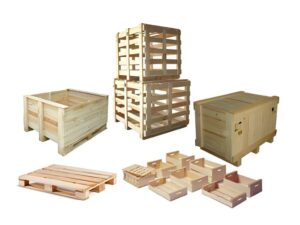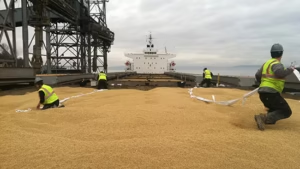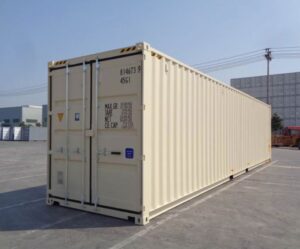Heat Treatment vs Methyl Bromide Fumigation: Which is Better for Pest Control?
When it comes to treating wood packaging materials (WPM), like pallets and crates, to meet international export regulations (such as ISPM-15), two main methods are widely used: heat treatment (HT) and methyl bromide (MB) fumigation.
Both have their advantages and limitations, but which one is better for your business? Here’s a detailed comparison.
What Is Heat Treatment?
Heat Treatment involves exposing wood to a high temperature—typically 56°C (132.8°F) for at least 30 minutes, measured at the core of the wood. This method eliminates pests, pathogens, and larvae without using any chemicals.
What Is Methyl Bromide Fumigation?
Methyl Bromide Fumigation uses a toxic gas—methyl bromide—to kill pests within wood materials. The wood is enclosed in a sealed environment where the gas is applied for several hours under controlled conditions.
Heat Treatment vs Methyl Bromide: Side-by-Side Comparison
| Feature | Heat Treatment | Methyl Bromide Fumigation |
|---|---|---|
| Environmental Impact | Eco-friendly, chemical-free | Harmful; methyl bromide is an ozone-depleting substance |
| Regulatory Compliance | ISPM-15 compliant | ISPM-15 compliant (but phased out in some countries) |
| Pest Control Effectiveness | Highly effective | Highly effective |
| Treatment Duration | 30–60 minutes + cooling | 24–48 hours including airing out |
| Residue/Chemical Risk | No residue | Risk of toxic residue |
| Worker Safety | Safe for operators | Requires protective gear and careful handling |
| Cost | Higher upfront (equipment) but lower over time | Lower upfront cost, higher operational and compliance costs |
| Sustainability | Preferred by eco-conscious companies | Being phased out due to environmental harm |
| Availability | May require specialized equipment | More widely available in some regions |
Heat Treatment vs Methyl Bromide Fumigation: What’s Best for Export Logistics?
In the logistics industry, ensuring that wood packaging materials (WPM) like pallets, crates, and dunnage comply with ISPM-15 regulations is essential for smooth international trade. Two main methods are used to treat wood: heat treatment (HT) and methyl bromide (MB) fumigation.
But which is better for logistics operations that prioritize compliance, speed, safety, and cost-efficiency?
Here’s a comprehensive comparison tailored for logistics professionals.
Why Wood Packaging Needs Treatment
International trade regulations require that all solid wood packaging used in shipping be treated to prevent the spread of pests and diseases. ISPM-15, the global standard, mandates that WPM must be:
- Heat treated or
- Fumigated with methyl bromide
—and then marked with the ISPM-15 stamp to be accepted at ports of entry.
Heat Treatment vs Methyl Bromide: Quick Comparison
| Criteria | Heat Treatment (HT) | Methyl Bromide (MB) Fumigation |
|---|---|---|
| ISPM-15 Compliant | ✅ Yes | ✅ Yes |
| Environmental Impact | 🌱 Eco-friendly | ❌ Ozone-depleting (restricted in many regions) |
| Treatment Time | ~1 hour (plus cooldown) | 24–48 hours |
| Residue Risk | None | Toxic residue possible |
| Worker Safety | Safe | Hazardous (requires trained staff & PPE) |
| Cost | Higher initial cost, lower long-term | Lower initial cost, higher ongoing |
| Preferred for Export | Increasingly preferred globally | Banned or limited in many countries |
| Sustainability | ✅ Sustainable | ❌ Environmentally harmful |
| Infrastructure Needs | Requires kiln or chamber | Requires fumigation tent/chamber |
What Logistics Companies Need to Consider
📦 Turnaround Time
- HT can be done in under an hour, ideal for high-throughput operations.
- MB fumigation requires 24–48 hours including aeration time, which may delay shipments.
🌍 Regulatory Compliance
- Countries like Australia, New Zealand, and the EU are phasing out methyl bromide.
- HT-treated pallets are accepted in more countries without restriction, reducing the risk of border delays or rejections.
⚠️ Risk Management
- HT avoids the risks of chemical exposure to workers and product contamination.
- MB requires strict safety protocols and can’t be used near food products or sensitive goods.
💰 Cost and ROI
- MB might seem cheaper up front, but recurring costs for fumigant, permits, and safety measures add up.
- HT requires investment in heat chambers or buying HT-certified pallets—but lowers compliance risk and improves operational efficiency.
The Shift Toward Heat Treatment in Logistics
With sustainability becoming a priority across supply chains, more shippers are moving toward heat treatment as the standard method for wood packaging compliance.
Benefits include:
- Faster turnaround
- Safer operations
- Fewer regulatory issues at destination ports
- Alignment with corporate ESG goals
Final Verdict: Heat Treatment is the Smarter Choice for Logistics
While both methods meet ISPM-15 standards, heat treatment offers clear advantages for logistics providers:
✅ Faster compliance
✅ Safer for staff and goods
✅ Widely accepted worldwide
✅ Long-term cost efficiency
✅ Environmentally responsible
If your logistics operations involve frequent international shipments, heat-treated wood packaging is the more reliable, future-proof solution.
Need HT-Certified Pallets or Treatment Services?
We work with logistics companies to provide ISPM-15-compliant wood packaging and treatment solutions that keep shipments moving and compliant. Contact us to learn more or request a quote.







